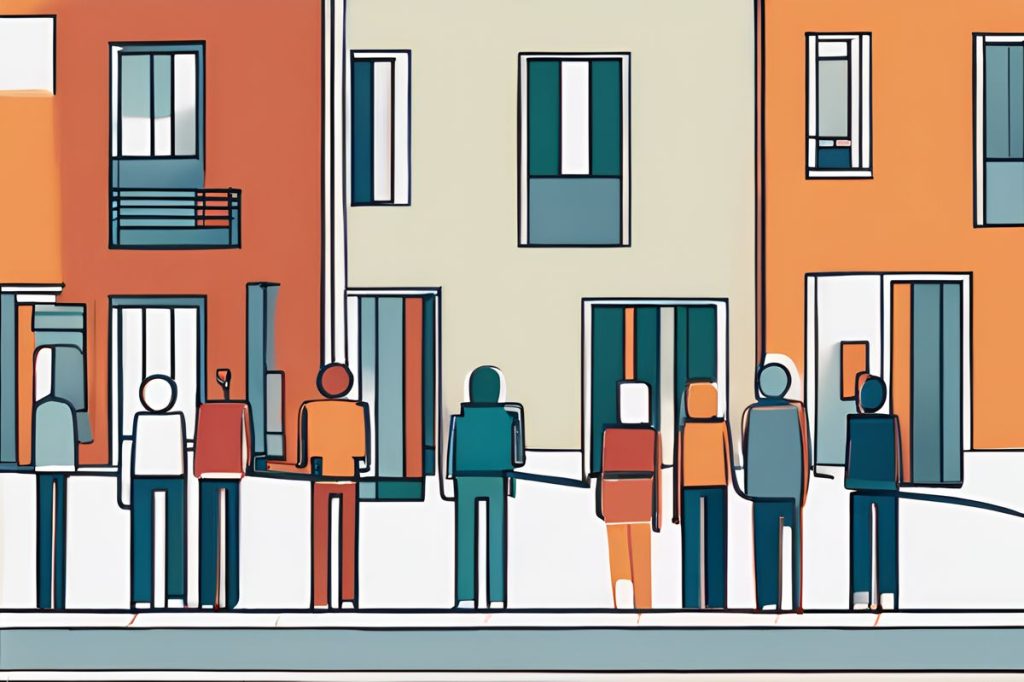Neighborly relationships have evolved from close-knit, family-like connections to more subdued interactions due to modern life’s pace, technology’s allure, and demographic changes. Yet, pockets of strong community bonds still exist in cities, showing the enduring essence of human connection and the need for a sense of community.
What has changed in neighborly relationships over time?
Neighborly relationships have shifted from close-knit, family-like connections to more subdued interactions due to modern life’s pace, technology’s allure, and demographic changes. Despite these challenges, pockets of strong community bonds persist in cities, showing a human need for connection and the enduring essence of community.
The Bygone Era of Neighborly Bonds
There was a time in Cyprus where the term ‘neighbor’ encompassed much more than the person living next door. Neighbors were an extended family, integral to every aspect of daily life. This sense of community was a cornerstone of Cypriot culture, echoing a global sentiment where neighbors relied on each other through thick and thin.
Birthdays, name days, and family celebrations were communal affairs, with invitations extending down the street and around the block. Generations of families intertwined, creating a rich tapestry of shared history. Orchards and gardens were not just personal sustenance but a source of generosity, as fruits and blooms were exchanged freely. This practice wasn’t exclusive to Cyprus but a common thread in the fabric of societies worldwide, where communal living fostered trust and connection.
The Changing Tides of Community Interaction
However, the landscape of interpersonal relationships within communities has shifted noticeably. The vibrant gatherings and mutual support that once flourished have become subdued. In many locales, including Cyprus, the fast pace of modern life has left little room for the leisurely chats and spontaneous visits that used to knit communities together.
Work commitments, the allure of technology, and changing demographics have altered the dynamics of neighborly interaction. Social hubs, such as community centers and local cafés, once teeming with life and conversation, now see fewer and fewer patrons, the vibrancy of their past reduced to a whisper of memories. This transformation reflects a global trend, as societies grapple with the balance between progress and the preservation of traditional community values.
A Shift in Demographics and the Impact on Neighborly Relations
Demographic changes have also played a significant role in the evolution of neighborhood relations. Increased mobility and immigration have introduced a rich diversity to communities, bringing new customs and languages. While this diversity is a sign of a dynamic society, it also presents challenges in maintaining the ‘neighbor-as-family’ dynamic that was once the norm.
Rising property prices and the transitory nature of rental living have further diluted the permanence of community connections. The financial pressures faced by many have reshaped neighborhoods, turning once tight-knit communities into transient waypoints for individuals and families on the move.
In the Heart of the Cities: A Glimmer of Neighborly Connection
Despite these changes, not all community bonds have weakened. In some city areas, neighbors still find ways to connect. Shared experiences, such as economic challenges or the absence of family nearby, can become the catalysts for forming new types of neighborhood ties.
In these urban pockets, a new sense of solidarity has emerged, born not from shared history but from shared circumstances. Here, the neighborly spirit endures, adapting to the realities of contemporary life, proving that even as the world changes, the fundamental human need for connection and community remains steadfast.
While the nature and dynamics of neighborly bonds have transformed over time, the essence of what it means to be a part of a community continues to evolve. Despite the challenges of modern life, the yearning for a sense of belonging and mutual support endures, suggesting that the concept of neighbors as family, though altered, is not entirely lost.
How have neighborly relationships changed over time?
Neighborly relationships have shifted from close-knit, family-like connections to more subdued interactions due to modern life’s pace, technology’s allure, and demographic changes. Despite these challenges, pockets of strong community bonds persist in cities, showing a human need for connection and the enduring essence of community.
What was the role of neighbors in the past?
In the bygone era, neighbors were considered an extended family integral to every aspect of daily life. They played a crucial role in communal celebrations, exchanged fruits and blooms, and relied on each other through thick and thin. This sense of community was a cornerstone of many societies, fostering trust and connection.
How has demographic changes impacted neighborly relations?
Demographic changes, such as increased mobility, immigration, and rising property prices, have influenced neighborly relations. Diversity in communities brings new customs and languages but also challenges the ‘neighbor-as-family’ dynamic. Transient living and financial pressures reshape neighborhoods, impacting the permanence of community connections.
Are there still strong community bonds in cities?
Despite the changing landscape of neighborly relationships, some urban areas still maintain strong community ties. Shared experiences, like economic challenges or absence of family nearby, can foster new forms of neighborhood connections. In these pockets, a sense of solidarity emerges, adapting to contemporary realities while preserving the essence of community.

